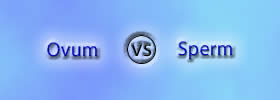Difference between Planet and Minor Planet
Key difference: A "planet" is a celestial body that: (a) is in orbit around the Sun, (b) has sufficient mass for its self-gravity to overcome rigid body forces so that it assumes a hydrostatic equilibrium (nearly round) shape, and (c) has cleared the neighborhood around its orbit. A minor planet, on the other hand, is an object that orbits the Sun but cannot be classified as a dominant planet or a comet. Hence, minor planets are a vague category that can include dwarf planets, asteroids, trojans, centaurs, Kuiper belt objects, and other trans-Neptunian objects.
include("ad4th.php"); ?>
 A planet is a large object that orbits around a star or a stellar remnant. This is mainly due to its own gravity and gravity of the star that allows the planet to have an orbit around the star. The orbit is usually elliptical in shape, mainly depending on the gravitational force of the planet and the star.
A planet is a large object that orbits around a star or a stellar remnant. This is mainly due to its own gravity and gravity of the star that allows the planet to have an orbit around the star. The orbit is usually elliptical in shape, mainly depending on the gravitational force of the planet and the star.
Also see: Difference between dwarf planet and planet
The gravitational force of the planet is strong enough that it leads the planet to be rounded, i.e. compound its matter in a spherical shape. A planet has also cleared its neighboring region of any other debris. The planetesimals, i.e. other debris, should either get absorbed into the planet, or if it big enough to have a gravitational force of its own, it might become a satellite of the planet, i.e. moon, or will just float away into space.
As per the International Astronomical Union (IAU), “A "planet" is a celestial body that: (a) is in orbit around the Sun, (b) has sufficient mass for its self-gravity to overcome rigid body forces so that it assumes a hydrostatic equilibrium (nearly round) shape, and (c) has cleared the neighbourhood around its orbit.”
include("ad3rd.php"); ?>
Hence, as per this definition, there are currently eight planets in our solar system: Mercury, Venus, Earth, Mars, Jupiter, Saturn, Uranus, and Neptune, in order of distance from the Sun.
 A minor planet, on the other hand, is an object that orbits the Sun but cannot be classified as a dominant planet or a comet. Hence, minor planets are a vague category that can include dwarf planets, asteroids, trojans, centaurs, Kuiper belt objects, and other trans-Neptunian objects. Minor planets were also once known as planetoids or asteroids. The orbits of more than 570,000 objects have been archived at the Minor Planet Center.
A minor planet, on the other hand, is an object that orbits the Sun but cannot be classified as a dominant planet or a comet. Hence, minor planets are a vague category that can include dwarf planets, asteroids, trojans, centaurs, Kuiper belt objects, and other trans-Neptunian objects. Minor planets were also once known as planetoids or asteroids. The orbits of more than 570,000 objects have been archived at the Minor Planet Center.
The term, "minor planet" has been used since the 19th century to describe any objects that cannot be classified as planets or comets. However, in 2006, the IAU introduced the three-part categorization system, under which these minor planets were further classified as dwarf planets or small Solar System bodies.
Also see: Difference between planets and moons
As per the IAU's final Resolution 5A, planets and other bodies, except satellites, in our Solar System can be defined into three distinct categories:
- A planet is a celestial body that (a) is in orbit around the Sun, (b) has sufficient mass for its self-gravity to overcome rigid body forces so that it assumes a hydrostatic equilibrium (nearly round) shape, and (c) has cleared the neighborhood around its orbit.
- A "dwarf planet" is a celestial body that (a) is in orbit around the Sun, (b) has sufficient mass for its self-gravity to overcome rigid body forces so that it assumes a hydrostatic equilibrium (nearly round) shape, (c) has not cleared the neighborhood around its orbit, and (d) is not a satellite.
- All other objects, except satellites, orbiting the Sun shall be referred to collectively as "Small Solar System Bodies."
Hence, it can effectively be said that the term "minor planet" is an outdated term. According to the IAU, “the term 'minor planet' may still be used, but generally the term 'small solar system body' will be preferred."
The IAU states that other than planets or dwarf planets, “all other objects, except satellites, orbiting the Sun shall be referred to collectively as "Small Solar System Bodies" ... These currently include most of the Solar System asteroids, most Trans-Neptunian Objects (TNOs), comets, and other small bodies.”
Image Courtesy: earthsky.org, twtrland.com









Add new comment